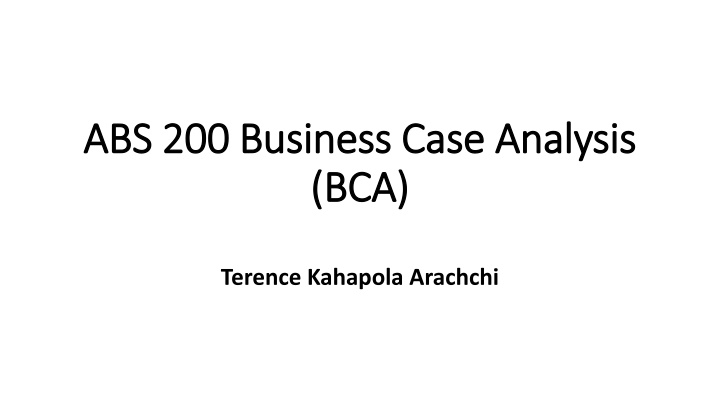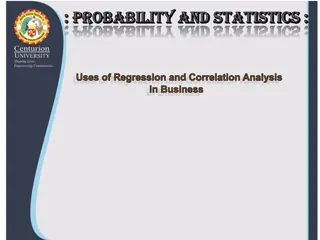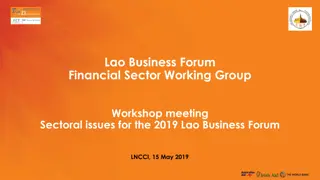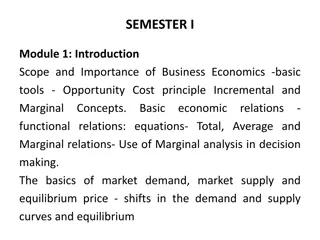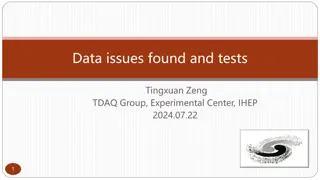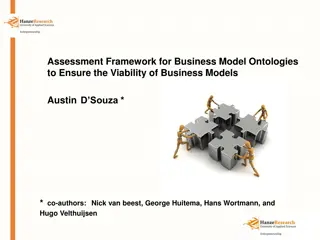Key Issues and Insights: Business Case Analysis of Mansako
The business case analysis of Mansako highlights key issues such as regaining growth in the existing product portfolio, repositioning to the high-end segment, exploring new market segments, and potential mergers and acquisitions. Insights from the Deloitte Global Powers of Luxury Goods 2020 report reveal the importance of Millennials and Gen Z, industry trends towards sustainability and online sales, and key geographical markets for the luxury industry.
Download Presentation

Please find below an Image/Link to download the presentation.
The content on the website is provided AS IS for your information and personal use only. It may not be sold, licensed, or shared on other websites without obtaining consent from the author.If you encounter any issues during the download, it is possible that the publisher has removed the file from their server.
You are allowed to download the files provided on this website for personal or commercial use, subject to the condition that they are used lawfully. All files are the property of their respective owners.
The content on the website is provided AS IS for your information and personal use only. It may not be sold, licensed, or shared on other websites without obtaining consent from the author.
E N D
Presentation Transcript
ABS 200 Business Case Analysis ABS 200 Business Case Analysis (BCA) (BCA) Terence Kahapola Arachchi
Lecture Three Lecture Three 21 March 2021 21 March 2021 3.30PM 3.30PM 5.30PM 5.30PM
What we did last week What we did last week
What are the key issues facing Mansako? What are the key issues facing Mansako? Based on the analysis following key issues were discovered ISSUE 1 - How to regain growth for the existing product portfolio of Mansako as the pandemic is still raging on in March 2021? ISSUE 2 - How to reposition Mansako to the high-end segment as the Board of Directors are demanding? ISSUE 3 - What new market segments should the firm enter to continue growing? ISSUE 4 - Should Mansako grow through Mergers and Acquisitions if it should, what are the possible takeover candidates?
ISSUE 2 - How to reposition Mansako to the high-end segment as the Board of Directors are demanding? To get an idea of the high end market, we will take some extracts from The Deloitte Global Powers of Luxury Goods 2020 The new age of fashion The report is available for you to download from LMS.
What are the key insights and takeaways from this report? INSIGHT 1 - Millennials and Gen Z are not just important to mid-level leather goods segment that Mansako is operating in. These two groups are most important to high end segment as well. INSIGHT 2 The entire industry is moving fast towards Wokeness Sustainability Equality Minimizing Environmental Impact Ethical Practices INSIGHT 3 - The entire industry has moved to embracing online sales, digital and virtual experiences and virtual fashion shows.
What are the key insights and takeaways from this report? INSIGHT 4 China, France, Italy, Germany, Spain, US, UK, Switzerland and Japan are the most important geographical markets for luxury industry INSIGHT 5 Bags and accessories that Mansako specializes in consist of a small segment (5.6%) of the total luxury sales. Cosmetics, Jewellery and foot ware segments are bigger. It is also one of the slowest growing segments (4%)
What do these insights tell us to plan our effort to reposition Mansako to the high-end segment? Target market will be Millennials and Gen Z 1. Need to cultivate the woke image and back it up with practices 2. Embrace digital internet sales, virtual showrooms, virtual fashion shows 3. China, France, Italy, Germany, Spain, US, UK, Switzerland and Japan are the most important geographical markets for luxury industry 4. Leather goods are not growing fast should we enter the high end market through a different product category? 5.
BIGGEST ISSUE TO ADDRESS IN MOVING TO HIGH END LUXURY MARKET WHAT SHOULD BE THE STRATEGY?
Corporate Strategy of LVMH Worlds biggest luxury goods company LVMH, is a French multinational corporation and conglomerate specializing in luxury goods, headquartered in Paris, France LVMH controls around 60 subsidiaries that each manage a total of 75 luxury brands. The subsidiaries are often managed independently, under the umbrellas of six branches: Fashion Group, Wines and Spirits, Perfumes and Cosmetics, Watches and Jewelry
Mansako Mansako Corporate Strategy & Corporate Strategy & Competitive Strategy Competitive Strategy
Mansako Mansako Corporate Strategy Corporate Strategy What is corporate strategy? The overall strategy used by the company. It guides everything they do and affect all investments and other long term decisions. Mansako Corporate Strategy Create a holding company modelled on LVMH The holding company will own various subsidiaries that own a number of luxury brands catering to different product categories and segments of the luxury goods market Mansako brand will also become one of the subsidiaries of the holding company Each subsidiary/brand will have their own CEO and corporate structure to maximize opportunities for their brand/brands Each CEO will report to the Board of Directors of the holding company, led by the Chairman/Managing Director
Mansako Mansako Competitive Strategy Competitive Strategy What is competitive strategy and how is it different from the corporate strategy? Competitive strategy is business unit level strategy. Business unit level strategy is how the company (if it has only one business unit or one product category), its different business units or individual subsidiaries competes with rivals in their markets/market segments E.g. 1 : Unilever has 4 business units - Foods & Refreshments (beverages and ice cream), Home Care, and Beauty & Personal Care. Each business unit can have their own competitive strategy however, all business units are guided by the Unilever Corporate Strategy E.g. 2 : John Keells Holdings have many subsidiary companies. Each subsidiary has their own business unit strategy (competitive strategy) All JKH companies follow the same corporate strategy
Developing a business unit strategy (competitive strategy) using Porter s Generic Strategies Model Michael Porter proposes following competitive strategies for a company to compete in their industry
1-Cost leadership Strategy Source of competitive advantage ability to control costs Markets/segments where the company competes Broad (competes in almost all segments) The company tries to keep costs as low as possible and gains an advantage in the market by offering lower prices to customers They have products/services in all segments of the market they serve Examples US Retail Giant Walmart German Retail Giant Aldi Chinese smartphone maker Xiaomi
2- Cost Focus Strategy Source of competitive advantage ability to control costs Markets/segments where the company competes Narrow Examples Irish low cost airline Ryanair American ride sharing company Uber Sam's Club Wearhouse retailer (owned by Walmart) People must buy bulk quantities and get very low prices. Sweden s IKEA furniture company Furniture must be assembled by the customer
3- Differentiation Leadership Source of competitive advantage ability to produce innovative, unique products Markets/segments where the company competes Broad (competes in almost all segments) The company invests in R & D and Product Development to create new technologies, processes and product designs to create unique and innovative products They have products/services in most segments of the market they serve Examples Car companies such as VW, Toyota, Kia Software, games and cloud giant Microsoft Web, search, social media and technology giants such as Google
4 4 Differentiation Focus Strategy Differentiation Focus Strategy Source of competitive advantage ability to produce innovative, unique products Markets/segments where the company competes Narrow (specializes in one or two segments) The company invests in R & D and Product Development to create new technologies, processes and product designs to create unique and innovative products They have products/services in one or two segments of the market they serve Examples Social media giant Facebook (owns FB, WhatsApp and Instagram social networks) Elon Musk s Tesla, Space X and Starlink Germany s Porsche and UK s Jaguar-LandRover
Mansako Mansako Competitive Strategy Competitive Strategy We can propose that Mansako s subsidiaries (or business units) follow DIFFERNTIATION FOCUS strategy as each of them will be in the Luxury Goods Market.
Mansako Mansako Competitive Strategy > Differentiation Competitive Strategy > Differentiation Focus Strategy Focus Strategy 1 -Each subsidiary (business unit) of Mansako Holdings will focus on a very narrow product category or two of the luxury goods market E.g. Leather goods & accessories subsidiary. 2 - Each product/brand offered will be high quality, highly unique and will match the characteristics of the market they serve
3 - Pricing will match the targeted market segment of each business unit (e.g. $3000+ high end segment, $500-$3000 mid level segment and sub 500 entry level segment) 4 - Each business unit will compete in only one segment of the market (i.e. High end, Mid Level or Entry Level) This is to ensure that the brand image will not get diluted by being in low price segment
Mansako Competitive Strategy (Business Unit Level Strategy in Summery with some examples) Competitive Strategy / Business Unit Strategy showing the market segment and focus product category Business Unit 1 Segment: Mid Level Product category Bags and accessories Brand - Mansako Business Unit 2 Segment: High End Product Category Clothing & Footwear Brand? (To be acquired E.g. Dolce & Gabbana) Mansako Holdings - Corporate Strategy Business Unit 3 Segment: Entry Level Product Category - Cosmetics & Fragrances Brand? (To be acquired E.g. Nina Ricci) Business Unit 4 Segment: Mid Level Product Category Jewellery & Watches Brand? (To be acquired E.g. Saint Laurent) Business Unit 5 Segment: High End Product category Bags and accessories Brand? (To be acquired E.g. Valentino)
ISSUE 2 - How to reposition Mansako to the high-end segment as the Board of Directors are demanding? What key things should include in our plan? ISSUE PROPOSED APPROACH & JUSTIFICATION What should be our corporate strategy? We should adopt the strategy of the French luxury giant LVMH Assemble a portfolio of brands over time rather than be a one brand company. As explained in Corporate Strategy Section. Justification
ISSUE 2 - How to reposition Mansako to the high-end segment as the Board of Directors are demanding? What key things should include in our plan? ISSUE PROPOSED APPROACH & JUSTIFICATION Product Category to launch into high end of the market? What product category are we going to enter the high-end segment with? Stick to leather goods or choose another category?
ISSUE 2 - How to reposition Mansako to the high-end segment as the Board of Directors are demanding? What key things should include in our plan? ISSUE PROPOSED APPROACH Target Market? High net-worth Millennial and Gen Z ISSUE PROPOSED APPROACH Initial Geographical Market for Entry?
ISSUE 2 - How to reposition Mansako to the high-end segment as the Board of Directors are demanding? What key things should include in our plan? ISSUE PROPOSED APPROACH Social Image we should develop?
ISSUE 2 - How to reposition Mansako to the high-end segment as the Board of Directors are demanding? What key things should include in our plan? ISSUE PROPOSED APPROACH Brand Image we should develop ISSUE PROPOSED APPROACH Retail Strategy ISSUE PROPOSED APPROACH Promotion Strategy
ISSUE 2 - How to reposition Mansako to the high-end segment as the Board of Directors are demanding? What key things should include in our plan? ISSUE PROPOSED APPROACH Product design and development ISSUE PROPOSED APPROACH Production and Supply chain
NEXT UP ISSUE 3 - What new market segments should the firm enter to continue growing? ISSUE 4 - Should Mansako grow through Mergers and Acquisitions if it should, what are the possible takeover candidates?
ISSUE 3 - What new market segments should the firm enter to continue growing?
ISSUE 3 ISSUE 3 - - What new market segments should the firm enter to continue What new market segments should the firm enter to continue growing? growing? Luxury goods industry has four major categories of products Clothing & Footwear Bags and Accessories Cosmetics & Fragrances Jewellery & Watches 1. 2. 3. 4. Luxury goods industry has three major market segments High end segment Very high net worth individuals (Upper Class/Millionaire Club) Mid level segment High net worth individuals (Aspirants/Upper Middle Class) Entry level segment Middle class professionals with high income 1. 2. 3.
ISSUE 3 ISSUE 3 - - What new market segments should the firm enter to continue growing? What new market segments should the firm enter to continue growing? HIGH END Clothing & Footwear Bags and Accessories Cosmetics & Fragrances Jewellery & Watches $3000-$25,000 price point Current Segment of Mansako MID LEVEL LUXURY GOODS INDUSTRY Clothing & Footwear Bags and Accessories Cosmetics & Fragrances Jewellery & Watches $500-$3000 price point ENTRY LEVEL Clothing & Footwear Bags and Accessories Cosmetics & Fragrances Jewellery & Watches Sub $500 price point
Mansako is currently operating in only one market segment and in one product category. Which means they have 11 more possible market segment/product categories they could possibly enter to expand Most likely possibilities Mid level segment other three product categories 1. Clothing & Footwear 2. Cosmetics & Fragrances 3. Jewellery & Watches High end segment all four product categories 1. Clothing & Footwear 2. Bags and Accessories 3. Cosmetics & Fragrances 4. Jewellery & Watches
What is the potential of these markets?
Richemont Swiss luxury goods company: Revenue 14.238 billion Chow Tai Fook Hong Kong luxury goods company (private) Swatch Swiss luxury watch company (private)
Phillips-Van Heusen (PVH) US company which own Tommy Hilfiger, Van Heusen & Calvin Klein Revenue US$ 9.8 billion Ralph Lauren US Company Revenue US$ 5.9 billion Hugo Boss German company Revenue 2.7 billion
Estee Lauder US company Revenue US$ 14.2 billion L Or al Luxe - The luxury products division of French company L'Or al . Owns cosmetics and fragrance products of 36 brands including Lanc me, Diesel and Prada Shiseido Japanese cosmetics company
EssilorLuxottica French Multinational company and owners of Ray-Ban, Oakley, Michael Kors brands of eyewear and accessories
What are the limiting factors which might prevent Mansako from expanding into new market segments?
ISSUE 4 - Should Mansako grow through Mergers and Acquisitions if it should, what are the possible takeover candidates?
What are mergers & acquisitions? Mergers and acquisitions (M&A) is a general term used to describe the consolidation of companies or assets through various types of financial transactions, including;
Mergers -- For example, Compaq merged with Hewlett-Packard in 2002. Compaq's pre- merger stock market symbol was CPQ. This was combined with Hewlett- Packard's stock market symbol (HWP) to create the current stock market symbol (HPQ) Another example Disney Pictures and 21st Century Fox merger valued at $52.4bn Sri Lanka - Hutchison Etisalat merger (May 2019),
Acquisitions -- Sri Lanka examples Hemas acquisition of Atlas Stationary Company Hayley's acquisition of Singer SL Mr. Dilith Jayaweera s (Triad, Derana, Citrus) Divasa Equity Ltd, acquired over 40% of George Steuarts Now Mr. Dilith Jayaweera is the Chairman of George Steuarts George Steuarts acquisition of tea exporter HVA Foods Access Group s acquisition of Ninewells Hospital and Colonial Motors (Jaguar- Land Rover)
Tender offers In a tender offer, one company offers to purchase the outstanding shares of the other firm, at a specific price rather than the market price. Outstanding shares Total Issued Capital = Outstanding shares + Treasury shares Authorized capital = The acquiring company communicates the offer directly to the other company's shareholders, bypassing the management and board of directors.
Acquisition of assets -- -- This may also happen when the selling company may sell some of its underutilized assets (land, buildings, factories, patents, technology) to raise finance for more profitable activities.
Management acquisitions -- -- Example: By 1980, Harley-Davidson, the iconic American motorcycle company was on the verge of bankruptcy due to Japanese competition from Honda, Yamaha and Suzuki. In 1981 its management team did a management buyout and acquired the company. Today, Harley-Davidson has a $5 billion revenue and controls 50% of the world s super-heavyweight motorcycle market
